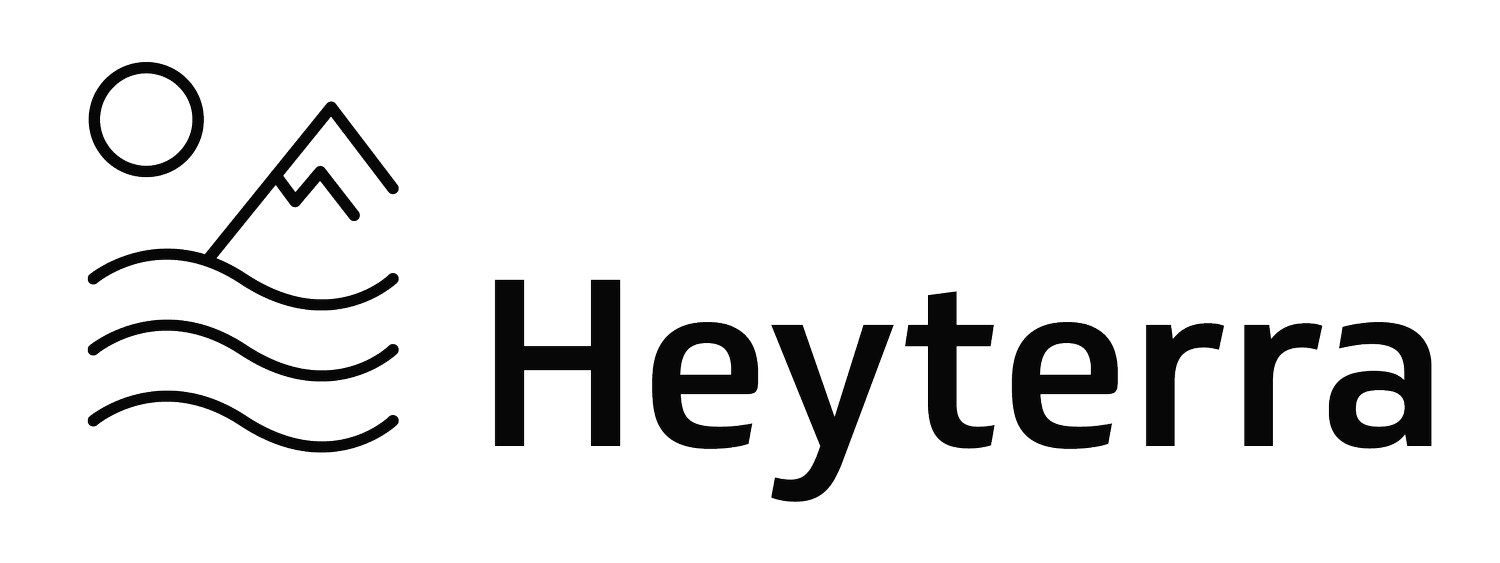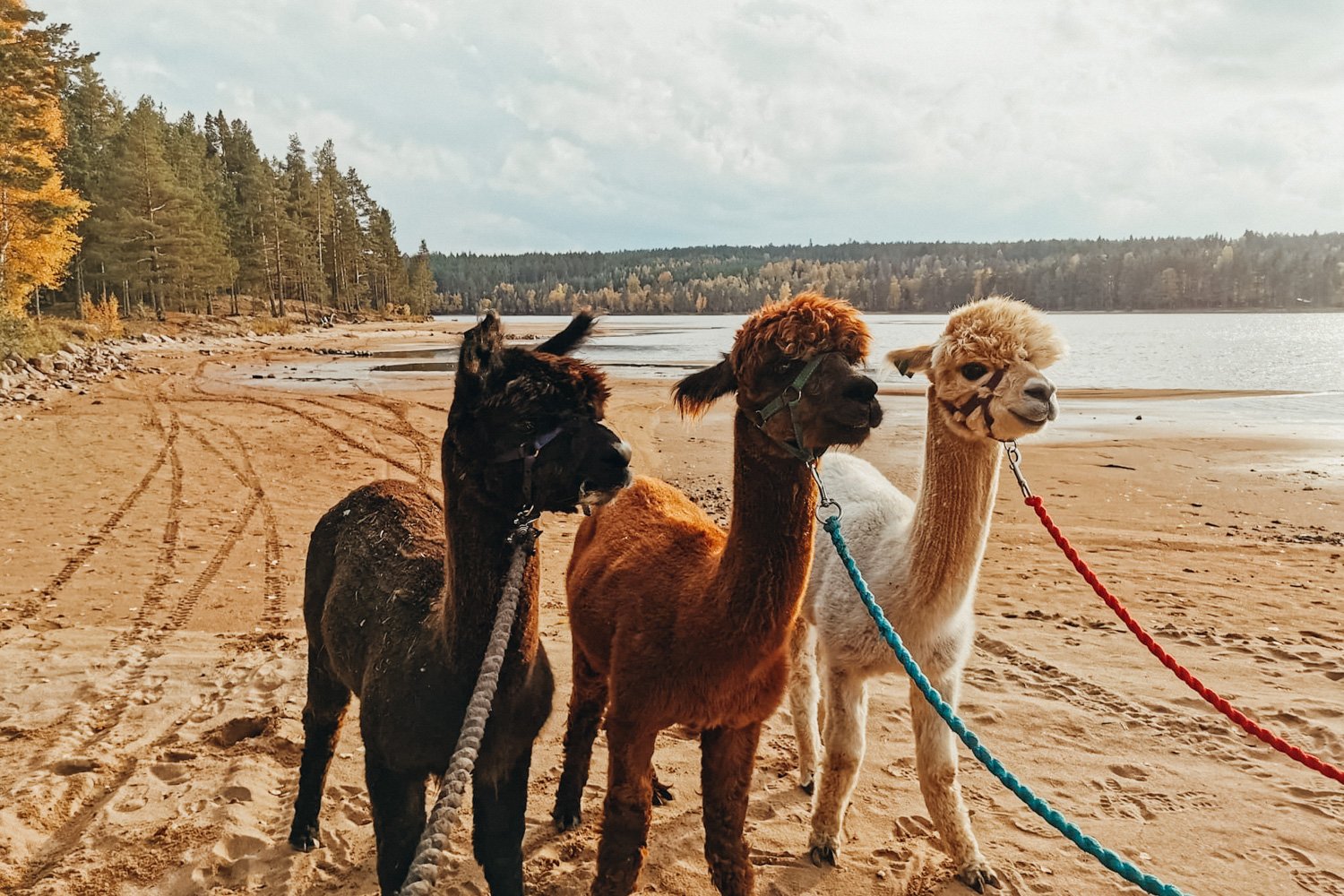Back to Nature
How a Belgian family found a new life quality in central Sweden, the outdoors, and best of all, alpacas— and are sharing their vision with everyone who come their way.
Kaatje Jacob of Swedish Belgians with one of her alpacas at Sandnasgard, Sweden.
Alpaca walks, skiing, sparking, ice skating, ice fishing, cross-country skiing: this list sounds like a selection of activities most of us would only dream of.
But for Kaatje Jacob and her family, they make up some of their favorite routine activities. And that’s only in winter. The warmer months bring a whole new menu of potential excursions, from hiking to canoeing. When obligations keep them closer to home, the family, still carves out time for “micro adventures,” such as wild camping for a night or even just a spontaneous picnic after a long day at work and school.
In their adopted homeland of Sweden, the country’s Everyman's Rules, or "Allemansrätten," make it easy to access and immerse oneself in nature. According to this eco-tastic set of laws, anyone can get out onto public land as and when they would like, provided they stick to basic principles of respect to the environment and local residents. The desire to spend more time outdoors and offline as a family was one of the main reasons Kaatje, Tim, and their three children decided to move to Sweden and eventually open an alpaca farm of their own. Three years in and documented on their handle Swedish Belgians, they are living the Scandinavian reconnecting-to-nature dream and sharing their vision with any visitors who come their way.
We recently caught up with Kaatje, who gave us a generous peek into her family’s inspirations as well as plenty of travel tips in their region.
From the de-stressing powers of alpacas to the magic created when people gather around fika, it’s no wonder they jumped off the hamster wheel of city life and never looked back. Read on for more reasons to visit the Sandnasgard farm near Rättvik, Sweden, online or in person.
HT: Tell us a bit about your family! Why did you decide to move from Belgium to Sweden?
KJ: We are Tim, Kaatje, Mitte, Lasse and Pelle and after a roadtrip in 2019 through Sweden we decided to jump into the unknown and emigrate to Sweden. In September 2019 we decided to emigrate and in July 2020 we emigrated to Sweden. We sold our house in Belgium and found a rental house in Falun. I started as a science teacher in the Internationella Engelska Skolan in Falun. Tim was taking care of the kids. After seven months, Tim started working in my school as a student care teacher and we are still doing this job.
The reason why we started thinking of something different was the rat race and the lack of nature. The constant pressure on us and the children, the rush from our jobs to the sports, to social obligations. We wanted a different life for us and our children and more time together.
In Sweden you have such beautiful nature. You have a lot of forest, many lakes, quiet places, fresh air. We fell in love with Sweden and we still are.
We are huge fans of Sweden, especially with life philosophies like the Everyman’s Rule. How are your kids taking advantage of a nature-centered life?
We are a very active family and we are active the whole year. The advantage of living here in Sweden is that you have 2 big seasons. The winter season with skiing, cross-country skiing, ice skating, snow walk, winter hikes, sparking and a lot of snow fun. And in the summer you have mountain biking, running, canoeing, kayaking, swimming, SUP-ping, hiking and a lot of camping trips with our rooftop tents.
If it is a warm day, the kids take their bikes and go to the lake for a swim or we grab some picnic and go to the sandy beaches 500 meters from our house. Here we experience a much bigger freedom than in Belgium. And we live so close to nature, so the kids are practically playing outside every day.
Tell us about your alpaca walks, how they are used in therapy and what a tour with you is like?
We have a big mission. We would like to reconnect people with nature. Over the years we have noticed that children and adults are tied to their screens and they have less outdoor time. This was the start for Sandnäsgård. The idea behind the alpaca walk is that you take your time, that you have time outdoors and that you take time with your friends and family. Time is priceless these days.
We started with alpacas because you need to walk slow. The alpacas are setting the pace. You can connect with them if you take your time. They are lovely animals and easy to walk with. And especially, alpacas calm you down and destress you. After a walk, you are totally destressed.
When you book a tour with us we always start with a meet and greet with the alpacas. You can feed them and start your connection with your alpaca. We have 3 alpacas, so we won’t take 20 people at the same time. We like to have small groups, so this way you have the best chance to enjoy and connect. All age groups can do this alpaca walk, from a baby in a baby carrier to any age.
After the meet and greet we start our walk in the forest. We have a lot of forest around our house, so different routes are possible. The walk takes about an hour. During the walk there are some questions hidden in the forest. Those questions give you more information about the alpacas. In Sweden we call this a tipspromenad.
After the walk you are totally relaxed and ready to eat something. We have a little fika stuga where we provide fika. Fika isn’t just food, it’s more. It is eating some food and drinking something, but it’s also taking time with your friends and family. If the weather is good, there is also a possibility to sit around the campfire next to the fika stuga.
Can you give us a few travel tips around Dalarna, the county in central Sweden you’re based in?
Dalarna is full of beautiful places and to many is considered the cultural heart of Sweden.
Falun: Gruva, or the mine— and one of Sweden’s UNESCO World Heritage Sites. Here you get to know why all the houses have the color red, or falu rödfärg.
Styggforsen: Waterfall and a nice place to walk.
Ärteråsen: Summer farm: in the summer you will find some cows there, in the winter is super nice to walk. (close to our place)
Orsa: Grönklitt: a ski area with dogsledding, cross country in winter, walking in the summer.
Rättvik: Långbrygga, the 628m pier in Siljanslake.
Nusnäs: Here you can see how they make the famous Dalahäst red wooden horse or Dala horse that’s become a universal symbol for Sweden.
Mora: Vasaloppet and Morakniv, producers of knives. Vasaloppet is a 90 km cross-country ski trip from Sälen to Mora. It is super famous in Sweden.
Siljansnäs: Naturum, a nature reserve with a watchtower.
We always love hearing about sustainable products and eco-friendly gear from the families we meet. Do you have a go-to travel item you can share?
We are traveling in a little van with 2 rooftop tents. It is super nice to feel the freedom and go wherever the car brings us.
A few things that we always take with us when we travel are two hammocks and a portable shower, we wash ourselves in the lakes, but sometimes we heat water on the campfire and take a shower in the middle of nowhere. We also love our surf ponchos from Absorb!










